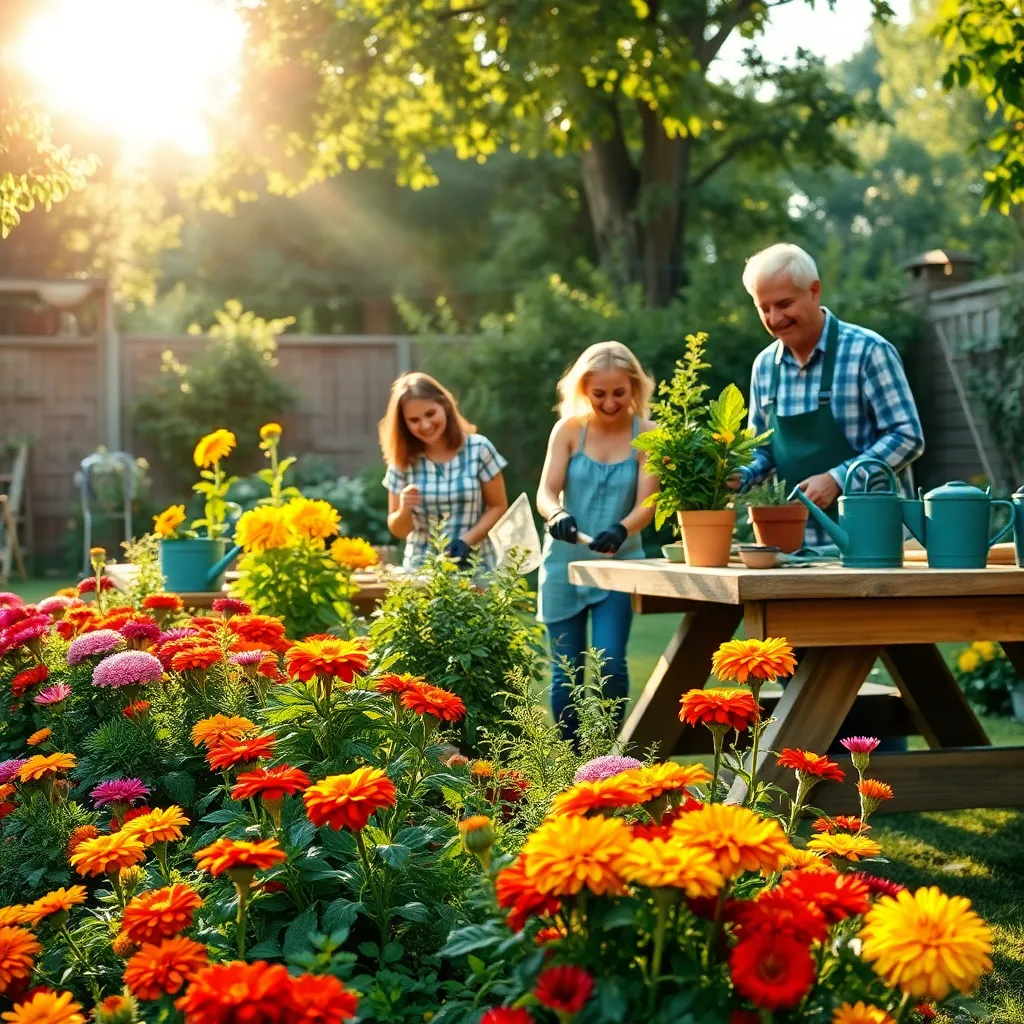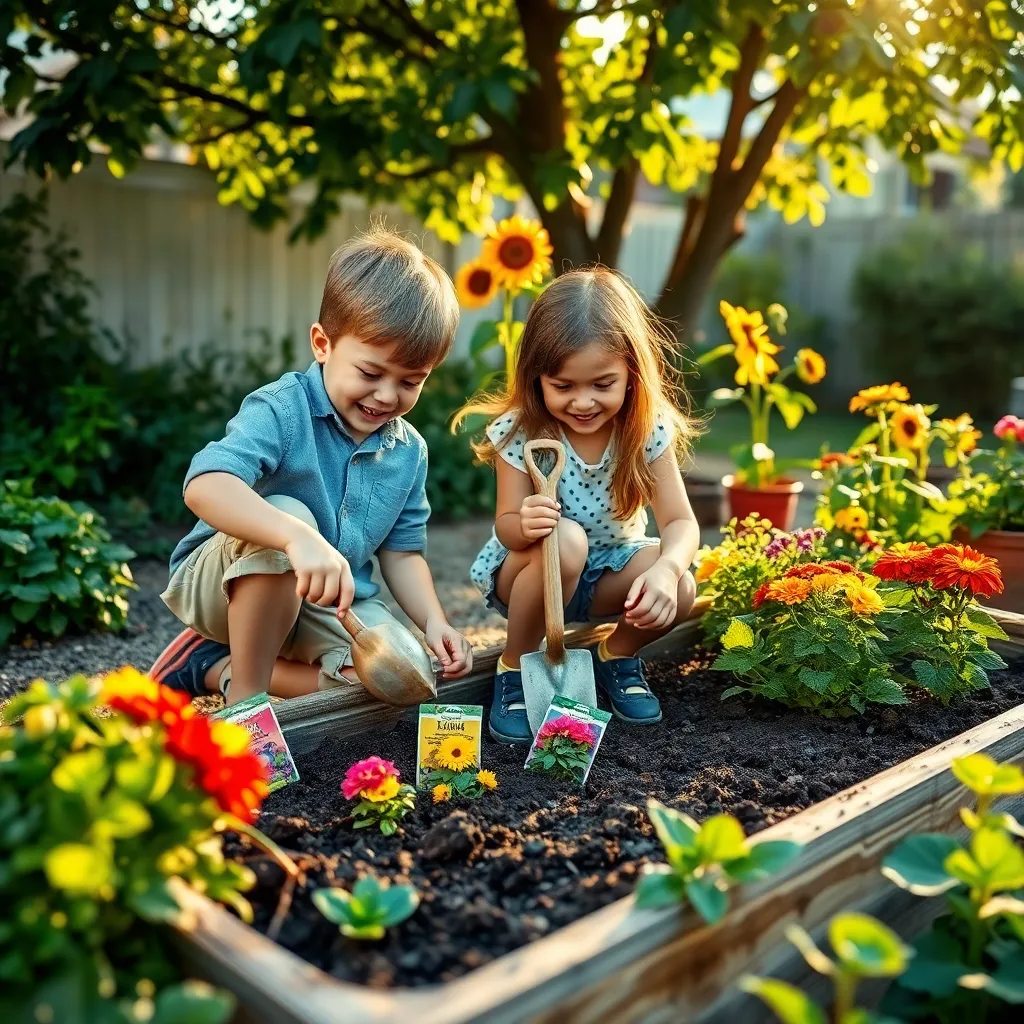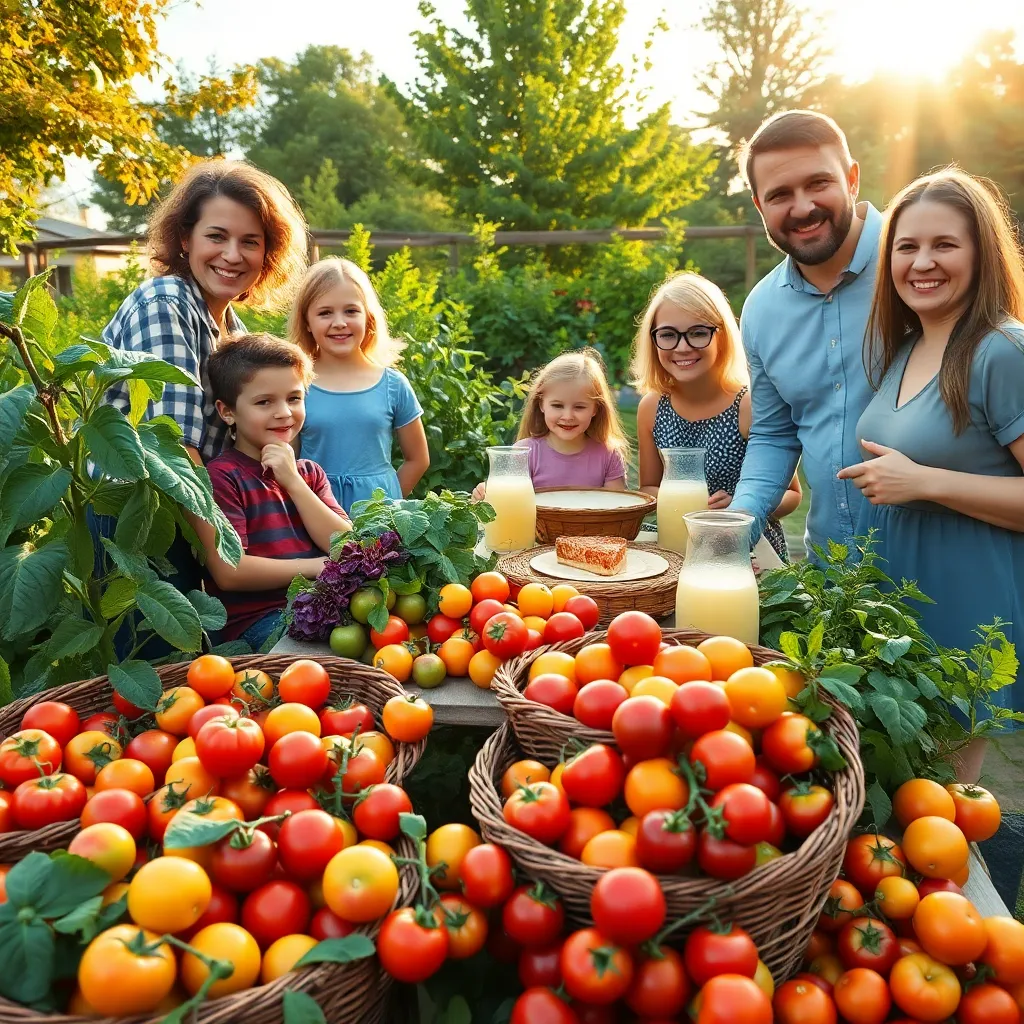Picture this: the sun is shining, the air is filled with the gentle hum of nature, and your family is gathered in the garden, each member eagerly tending to their own little patch of earth. Whether you’re a seasoned gardener with a thriving oasis or a beginner just dipping your toes into the soil, gardening as a family activity invites everyone to share in the joy and satisfaction of nurturing life together. This age-old pastime not only fosters a deep connection with nature but also strengthens family bonds, teaching valuable lessons about patience, responsibility, and collaboration.
In the hustle and bustle of daily life, finding meaningful ways to engage with each other can be challenging. That’s where the garden becomes a sanctuary—a place where every family member, regardless of age or experience, can contribute and grow. Together, you will explore tips and techniques that cater to all skill levels, from planting seeds to harvesting the fruits of your labor. As you delve into the joys of family gardening, you’ll discover how this shared endeavor can transform your backyard into a vibrant tapestry of colors and flavors, offering endless opportunities for learning and discovery.
From creating kid-friendly garden projects to mastering the art of composting, this article will guide you through every step of the journey. You’ll learn how to cultivate a family-friendly gardening routine that fits seamlessly into your lifestyle, making the process enjoyable and sustainable. Whether you’re looking to grow your own vegetables, nurture a flower bed, or simply spend quality time together, gardening as a family activity is a gateway to countless adventures and memories. So, grab your gloves and trowels, and let’s sow the seeds of a flourishing family garden—one that will inspire, educate, and bring joy to all who partake in its care.
Benefits of Family Gardening

Engaging in family gardening offers numerous benefits, both personal and communal. It fosters a sense of responsibility in children as they learn how to care for plants, teaching them about nature and sustainability.
Gardening as a family is a wonderful way to bond and spend quality time outdoors. By sharing tasks such as planting, watering, and weeding, family members can enjoy the satisfaction of watching their efforts grow into thriving plants.
Families can start with easy-to-grow plants like herbs, which require minimal space and are forgiving in care. Choose a sunny spot with well-draining soil, and ensure the herbs are watered regularly but not over-soaked, as excessive moisture can lead to root rot.
For those looking to expand their gardening skills, consider planting vegetables like tomatoes or green beans, which can be grown in containers or garden beds. Ensure the plants receive at least six hours of sunlight daily, and use a balanced fertilizer to support healthy growth.
Introducing children to composting can enhance their understanding of recycling and waste reduction. Set up a simple compost bin in the garden, and teach them to add kitchen scraps and garden waste, which will break down into nutrient-rich compost to feed the plants.
Choosing Family-Friendly Plants

When choosing family-friendly plants, consider varieties that are both safe and easy to care for. Opt for plants like sunflowers, cherry tomatoes, and marigolds, which are not only non-toxic but also thrive with minimal maintenance.
Sunflowers offer a fantastic introduction to gardening for children due to their rapid growth and impressive height. Plant them in a sunny spot with well-drained soil, and ensure they receive regular watering, especially during dry spells.
For a touch of color and pest control, marigolds are an excellent choice. These hardy plants are known for their ability to repel insects and can be easily grown in a sunny location with average soil and moderate watering.
If you’re looking to introduce your family to edible gardening, cherry tomatoes are a delightful option. They require full sun and benefit from a support structure, like a cage or trellis, to promote healthy growth and abundant fruiting.
Engaging Kids with Gardening Tasks

Gardening is a fantastic way to engage children, providing them with a hands-on opportunity to learn about nature. Start by giving them simple tasks like watering plants or pulling weeds, which helps them understand the responsibility of caring for living things.
Children are naturally curious, making them eager to participate in planting seeds. Choose fast-growing plants like radishes or sunflowers to maintain their interest, as these provide quick results and a sense of accomplishment.
Consider setting up a small, dedicated space in your garden where kids can experiment and grow their own plants. Using child-sized tools will make the tasks more manageable and enjoyable, encouraging them to explore gardening further.
Introduce educational elements by teaching kids about the different parts of a plant or how photosynthesis works. This can be done while planting or watering, turning a simple task into an engaging science lesson.
Creative Garden Projects for All Ages

Gardening can be a canvas for creativity, and projects like building a small herb spiral are a fun way to start. Construct the spiral using bricks or stones, and fill it with well-draining soil to accommodate a variety of herbs such as basil and rosemary.
Try making a miniature fairy garden using a large pot, some potting soil, and small decorative items like pebbles or figurines. This project is perfect for kids and adults alike, and it encourages imagination while teaching about plant care.
Consider creating a butterfly garden by selecting plants that attract these beautiful pollinators, such as milkweed, zinnias, and lavender. Ensure the area receives full sun and keep the soil moist but not waterlogged to support healthy plant growth.
For a more advanced project, build a vertical garden using an old pallet, lined with landscape fabric and filled with a lightweight potting mix. This is ideal for small spaces and can be used to grow strawberries, lettuce, or a variety of succulents.
Another engaging idea is to start a composting project, which teaches about sustainability and recycling organic waste. Begin with a simple bin, adding layers of green (nitrogen-rich) and brown (carbon-rich) materials, and turn regularly to aerate.
By involving family members of all ages in these creative projects, you can foster a love for gardening that is both educational and deeply rewarding. With each project, you not only enhance your garden but also create lasting memories.
Harvesting and Celebrating Together

Harvesting your homegrown produce can be a joyful family event, offering both tangible rewards and a sense of accomplishment. Begin by teaching younger family members how to identify when fruits and vegetables are ripe for picking, such as checking for vibrant color or a firm, even texture.
For beginners, focus on easy-to-harvest crops like radishes and lettuce, which can be ready in just a few weeks. Ensure that your soil is well-draining and rich in organic matter, which can be achieved by adding compost or well-rotted manure to your beds.
Involve everyone by assigning tasks such as gathering the harvest, washing produce, or preparing simple recipes using the garden’s bounty. Encourage the use of natural pest control methods, such as introducing beneficial insects, to maintain a healthy garden environment without harmful chemicals.
Advanced gardeners can experiment with succession planting to extend the harvest season, ensuring a continuous supply of fresh produce. By staggering planting times or choosing varieties with different maturity dates, you can enjoy a diverse array of crops throughout the growing season.
Celebrate your efforts by hosting a garden-to-table meal, where each family member contributes a dish using freshly picked ingredients. This not only reinforces the value of gardening but also instills a sense of community and shared achievement in your family.
Conclusion: Growing Success with These Plants
In “Gardening As A Family Activity,” we explored five key concepts that can enrich family relationships: communication, teamwork, patience, responsibility, and shared goals. By engaging in gardening, families can strengthen their bonds through open communication, learning to collaborate effectively as a team, and practicing patience as they wait for plants to flourish. The shared responsibility of nurturing a garden fosters a sense of accountability, while working toward common goals promotes unity and understanding.
To bring these concepts to life, why not start a small gardening project with your family this weekend? Choose a few easy-to-grow plants and design a simple garden plan together. This immediate step can set the stage for nurturing not only your garden but also your family connections.
Remember, cultivating relationships, like gardening, requires regular care and attention. Save or bookmark this article to revisit these insights and strategies whenever you need a reminder or inspiration. Embrace the journey of growing together, and you’ll find that the seeds of effort you plant today can lead to a flourishing family tomorrow. Let’s empower ourselves to nurture deeper connections, ensuring lasting success in our family relationships. 🌱❤️

